srImathE rAmAnujAya nama:
srImadh varavaramunayE nama:
srI vAnAchala mahAmunayE nama:
gOpAlakrishNa dhAsar (kOnAr) who was living in chennai and a sishya of
kOil kandhAdai vAdhUla aNNan swamy compiled a set of beautiful
phrases/sentences from nampiLLai‘s eedu (documented by vadakku thiruvIdhi piLLai) vyAkyAnam long ago. kOil vidhwAn srI U. vE. R
narasimhAchAryar swamy (paramapadhavAsi) wrote simple thamizh meanings
for those phrases/sentences. This book (https://docs.google.com/file/d/0ByVemcKfGLucbWJNTUMzVS1KTzA/edit?usp=sharing) was originally released on 7-1-68 and
was re-published by puthur raghurAman swamy (editior: srI sailEsa
dhayApAthram magazine). In this series we are relishing this great compilation with the english translation for the same.
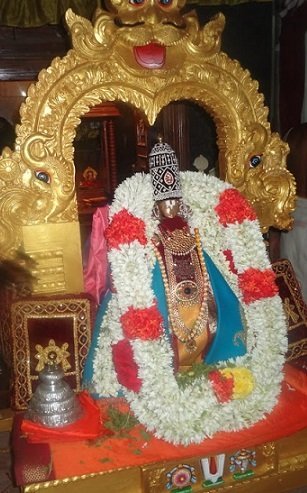
அவ்யக்தத்தினுடைய வ்யக்தததசையிறே மஹாநாகிறது.
mUla prakruthi is the primordial matter. sathvam (goodness), rajas (passion) and thamas (ignorance) are the 3 attributes of prakruthi. The unmanifested state of prakruthi is called avyaktham (unmanifested). In this state all 3 guNams are equally distributed. When the 3 guNams become inequally distributed that leads to the manifested state of prakruthi. mahAn is the first state of such manifested matter.
Translator’s note: piLLai lOkAchAryar explains these principles beautifully in thathva thrayam – this grantham is also called as kutti bhAshyam (brief srI bhAshyam – since it expounds all the principles that are explained in srIbhAshyam very crisply). mAmunigaL has written a most beautiful commentary which brings out the essence of samskritha vEdhAntham in the most excellent way. For a brief presentation of the same, visit https://granthams.koyil.org/thathva-thrayam-english/. Specifically, achith (matter) related topics are discussed in detail at https://granthams.koyil.org/2013/03/thathva-thrayam-achith-what-is-matter/
42 . sAthvikamAyum rAjasamAyum thAmasamAyum mUnRu vagaippattiRE ahankAranthAniruppathu.
ஸாத்விகமாயும் ராஜஸமாயும் தாமஸமாயும் மூன்று வகைப்பட்டிறே அஹங்காரம் தானிருப்பது.
ahankAram is the cause for us to be bewildered and consider our body as the soul. This is one of the 24 elements of matter. This is born from mahAn (manifested state of matter). ahankAram is of 3 types – sAthvikam, rAjasam and thAmasam.
Translator’s note: ahankAram means anAthmani Athma buddhi – considering the dhEham (body) as the AthmA (soul) out of ignorance. This is the first and the biggest hurdle in spiritual progress – unless we give up the thought that the body and soul are the same and understand that we are not our body, we cannot understand any other spiritual matters since our identity itself is wrong. In bhagavath gIthA, kaNNan emperumAn first establishes the nature of soul in the whole of second chapter. In the 12th slOkam – “nathvE vAham”, he right away explains that the jIvAthmA is imperishable and the body is perishable. In the same slOkam, he goes on to establish the existence of innumerable jIvAthmAs and unique identity of each jIvAthmA and also establishes that paramAthmA is different from jIvAthmA. Please see https://granthams.koyil.org/2013/03/thathva-thrayam-achith-what-is-matter/ for details.
43. sAthvika ahankAra kAryam EkAdhasa indhriyangaL. thAmasa ahankAra kAryam pruthivyAdhi bhUthangaL. iraNdukkum upakAramAy irukkum rAjasa ahankAram.
ஸாத்விக அஹங்கார கார்யம் ஏகாதச இந்த்ரியங்கள். தாமஸ அஹங்கார கார்யம் ப்ருதிவ்யாதி பூதங்கள். இரண்டுக்கும் உபகாரமாய் இருக்கும் ராஜஸ அஹங்காரம்.
From sAthvika ahankAryam, five gyAnEndhriyams (sense organs of knowledge), five karmEndhriyams (sense organs of action) and manas (mind) are manifested. gyAnEndhriyams – They are srOthra (ears), thvak (skin), chakshur (eyes), jihvA (tongue), grAhNa (nose). karmEndhriyams – vAk (mouth), pANi (hands), pAdha (legs), pAyu (excretory organs), upastha (organs for procreation). From thAmasa ahankAram, pancha bhUthams (five elements) are manifested. pancha bhUtams – AkAsa (ether), vAyu(air), agni (fire), Apa/jala (water), prthvi (earth). rAjasa ahankAram assists sAthvika ahankAram and thAmasa ahankAram in their activities.
Translator’s note: Please see https://granthams.koyil.org/2013/03/thathva-thrayam-achith-what-is-matter/ for details.
44. kittinArkku sAmyApaththiyiRE palam.
கிட்டினார்க்கு ஸாம்யாபத்தியிறே பலம்.
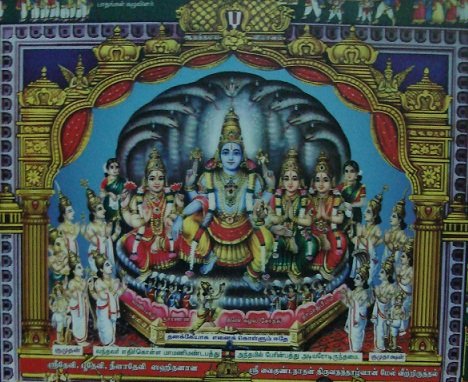
The real benediction for the jIvAthmA is to reach emperumAn. For the ones who reach him, he blesses him with sAmyApaththi mOksham as identified by thirumangai AzhwAr in periya thirumozhi 11.3.5 – “thammaiyE okka aruL cheyvar” (தம்மையே ஒக்க அருள் செய்வர் – bhagavAn will bless the mukthAthmA to have his qualities).
Translator’s note: sAmyApaththi mOksham means mukthAthmA acquiring eight qualities by the grace of bhagavAn. These qualities are present in bhagavAn fully. But beyond these eight qualities there are certain qualities like sriya:pathithvam (being the husband of srI mahAlakshmi), sEsha sAyithvam (the one lying on Adhi sEshan), ubhaya vibhUthi nAthathvam (being the controller of both nithya vibhUthi and leelA vibhUthi), etc., which are unique to bhagavAn alone.
The eight qualities are:
- apahathapApmA – being free from any sins
- vijara: – being free from old age
- vimruthyu: – being free from death
- visOka: – being free from sorrows
- vijigatsa: – being free from hunger
- apipAsa: – being free from thirst
- sathyakAma: – able to fulfill all desires
- sathyasankalpa: – able to complete any task
45. mukthar pancha vimsathi vArshikarAyiruppargaLiRE – niranthara bhagavadhanubhavaththAlE.
முக்தர் பஞ்ச விம்சதி வார்ஷிகராயிருப்பர்களிறே – நிரந்தர பகவதநுபவத்தாலே.
Since the mukthas (liberated souls) are constantly engaged in bhagavath anubhavam, they always stay 25 years old.
Translator’s note: Constant bhagavath anubhavam leads to one regaining/maintaining their youth (not in the material sense – its a spiritual principle which happens by the grace of bhagavAn). Let us see a couple of examples:
- dhasaratha chakkaravarthy was constantly seeing and enjoying srI rAma, and by doing that he was regaining his youth (forgetting his own body and focussing on bhagavAn). His constant bhagavath anubhavam is identified by kulasEkara AzhwAr in perumAL thirumozhi 9.4 pAsuram “vA pOgu vA” (வா போகு வா).
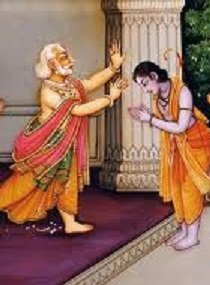
- In thiruppAvai 11th pAsuram “kaRRuk kaRavai” (கற்றுக் கறவை) same principle is explained. – kaRRu means calf and kaRavai means milk giving cow. When the question “How can a calf give milk?” arises, azhagiya maNavALa perumAL nAyaNAr beautifully explains it in the following manner. Just like mukthas stay at 25 years by being engaged in constant bhagavath anubhavam, here also the cows stay youthful like calves (stay young forever) due to the touch of krishNa, yet they give milk.
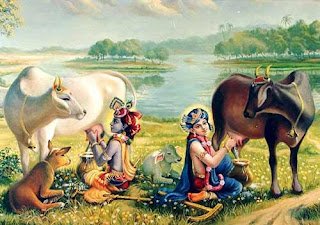
46. kshudhra vishayangaLAy anubhavikkap pukkAl, avai alpAsthirathvAdhi dhOsha thushtamAgaiyAlE, anubhavikkum kAlamum alpamAyirukkum.
க்ஷுத்ர விஷயங்களாய் அநுபவிக்கப் புக்கால், அவை அல்பாஸ்திரத்வாதி தோஷ துஷ்டமாகையாலே, அநுபவிக்கும் காலமும் அல்பமாயிருக்கும்.

All pleasures outside bhagavath vishayam are insignificant and impermanent. Because of that, the such pleasures are short-lived.
47. anubhAvya vishayam aparichchinnamAgaiyAlE kAlamum ananthakAlamAy irukkum.
அநுபாவ்ய விஷயம் அபரிச்சிந்நமாகையாலே காலமும் அநந்தகாலமாய் இருக்கும்.
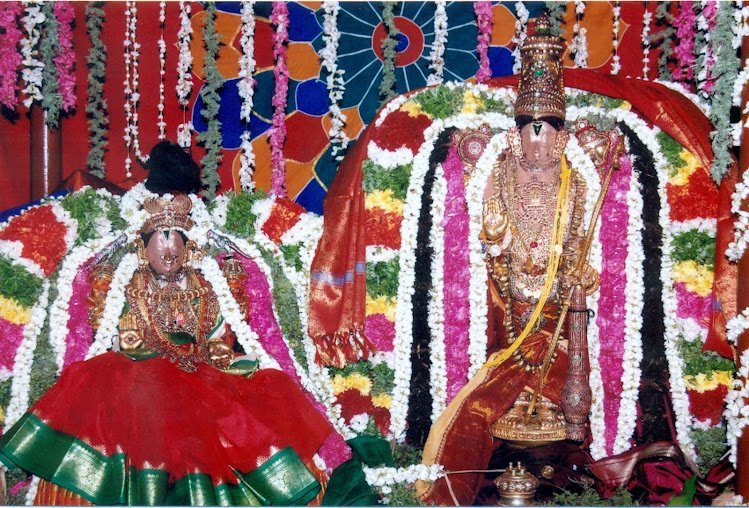
Since bhagavAn is unlimited, blissful kainkaryam (service) to him will also go on forever.
48. mAthA pithAkkaL kuRaivALar pakkalilEyiRE iranguvathu.
மாதா பிதாக்கள் குறைவாளர் பக்கலிலேயிறே இரங்குவது.
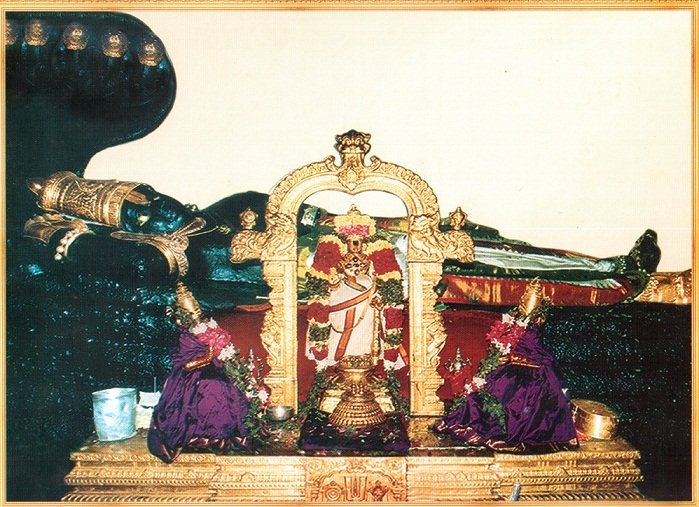
Parents are more attached and concerned towards children who are incapable (physically/mentally).
Translator’s note: bhagavAn is very merciful towards bhadhdha jIvAthmAs (ones who are suffering in samsAram) and is more concerned about them. Unlike nithyas (eternally free) and mukthas (liberated) who are both fully knowledgable and engaged in bhagavath kainkaryam, bhadhdhas are bound in samsAram and suffering here. Yet, they are also equally privileged to engage in kainkaryam – as soon as they understand their true identity and accept srIman nArAyaNan as their lord and master. To bring in such realization and awareness in bhadhdha jIvAthmAs, emperumAn takes so much effort by:
- performing srushti (creation)
- giving senses and body to jIvathmAs
- giving them gyAnam (knowledge)
- accompanying the jIvAthmA as antharyAmi always and guiding him
- giving them sAsthram through which he can be understood
- himself descending into samsAram as various avathArams
49. theLivisumbAgaiyAlE annilam thAnE solluvikkum. iruL tharumA gyAlamAgaiyAlE innilam aththaith thavirppikkum.
தெளிவிசும்பாகையாலே அந்நிலம் தானே சொல்லுவிக்கும். இருள் தருமா ஞாலமாகையாலே இந்நிலம் அத்தைத் தவிர்ப்பிக்கும்.
paramapadham (srIvaikuntam) is the place of endless bliss and blemishless knowledge – so it leads everyone to be engaged in constant glorification of srIman nArAyaNan (through sAma gAnam, etc). samsAram is filled with ignorance – so it leads everyone to engaged in other petty matters.
50. bhagavan nAma sankIrthanamum bhAgavatha sahavAsamum saththayAthArakam.
பகவந் நாம ஸங்கீர்தநமும் பாகவத ஸஹவாஸமும் ஸத்தயாதாரகம்.
Devotees sustain themselves by engaging in nAma sankIrthanam (singing the glories of bhagavAn) and by engaging in kainkaryams in the company of bhAgavathas.
archived in https://granthams.koyil.org, also visit https://acharyas.koyil.org, https://sriperumbuthur.blogspot.com
In hindi : https://granthams.koyil.org/2016/11/12/divine-revelations-of-lokacharya-5-hindi/